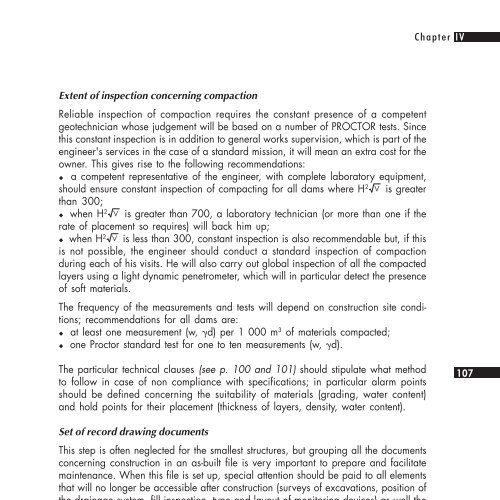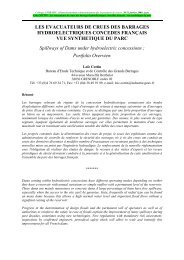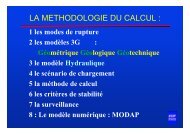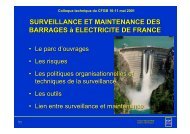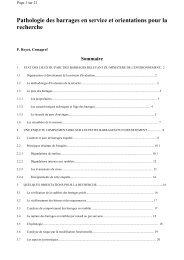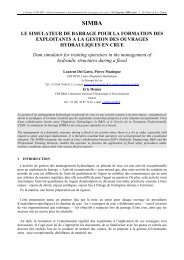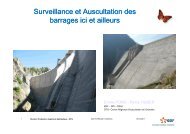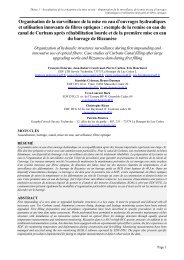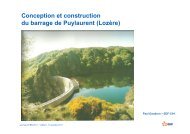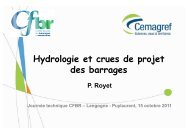SMALL DAMS
SMALL DAMS - Comité Français des Barrages et Réservoirs
SMALL DAMS - Comité Français des Barrages et Réservoirs
- No tags were found...
You also want an ePaper? Increase the reach of your titles
YUMPU automatically turns print PDFs into web optimized ePapers that Google loves.
Chapter IV<br />
Extent of inspection concerning compaction<br />
Reliable inspection of compaction requires the constant presence of a competent<br />
geotechnician whose judgement will be based on a number of PROCTOR tests. Since<br />
this constant inspection is in addition to general works supervision, which is part of the<br />
engineer's services in the case of a standard mission, it will mean an extra cost for the<br />
owner. This gives rise to the following recommendations:<br />
!" a competent representative of the engineer, with complete laboratory equipment,<br />
should ensure constant inspection of compacting for all dams where H 2 V is greater<br />
than 300;<br />
!"when H 2 V is greater than 700, a laboratory technician (or more than one if the<br />
rate of placement so requires) will back him up;<br />
!"when H 2 V is less than 300, constant inspection is also recommendable but, if this<br />
is not possible, the engineer should conduct a standard inspection of compaction<br />
during each of his visits. He will also carry out global inspection of all the compacted<br />
layers using a light dynamic penetrometer, which will in particular detect the presence<br />
of soft materials.<br />
The frequency of the measurements and tests will depend on construction site conditions;<br />
recommendations for all dams are:<br />
!" at least one measurement (w, d) per 1 000 m 3 of materials compacted;<br />
!" one Proctor standard test for one to ten measurements (w, d).<br />
The particular technical clauses (see p. 100 and 101) should stipulate what method<br />
to follow in case of non compliance with specifications; in particular alarm points<br />
should be defined concerning the suitability of materials (grading, water content)<br />
and hold points for their placement (thickness of layers, density, water content).<br />
107<br />
Set of record drawing documents<br />
This step is often neglected for the smallest structures, but grouping all the documents<br />
concerning construction in an as-built file is very important to prepare and facilitate<br />
maintenance. When this file is set up, special attention should be paid to all elements<br />
that will no longer be accessible after construction (surveys of excavations, position of<br />
the drainage system, fill inspection, type and layout of monitoring devices) as well the<br />
description of any incidents that occurred during construction such as floods, frost, or<br />
holds due to rain.


